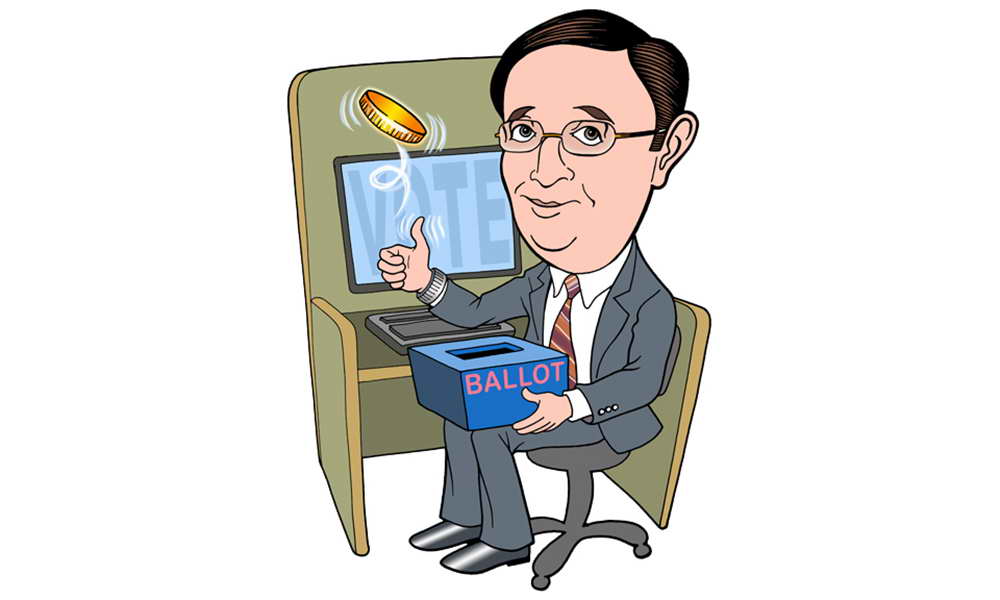January 4, 2012
1/4: Iowa Polls Chronicle Caucus Contest
The often cited fear of pollster par-excellence Richard Wirthlin about Iowa being the “ultimate sand trap” for pollsters did not materialize this time around. In fact, throughout the summer and in the closing days of the campaign, the public polls provided an accurate narrative of the surges and declines of candidate support. And, there were many. The roller coaster ride had most of the candidates occupying the lead car at one point or another. The ride ended with an insightful entrance poll last night.
 Along the way, the public was informed about the inability of “front-runner” Mitt Romney to break the mid-twenties. Romney ended up with 25%, ironically the exact proportion he received four years ago. But, the anti-Romney forces, throughout the Iowa campaign, were unable to coalesce around a single anti-Romney candidate. Tea Party supporters, Evangelical Christians, and conservatives were on the hunt. But, the closeness of the outcome last night reflected the lack of a unifying anti-Romney candidate. The polls identified the fissure within the GOP this election cycle, and that still remains to be addressed post-Iowa.
Along the way, the public was informed about the inability of “front-runner” Mitt Romney to break the mid-twenties. Romney ended up with 25%, ironically the exact proportion he received four years ago. But, the anti-Romney forces, throughout the Iowa campaign, were unable to coalesce around a single anti-Romney candidate. Tea Party supporters, Evangelical Christians, and conservatives were on the hunt. But, the closeness of the outcome last night reflected the lack of a unifying anti-Romney candidate. The polls identified the fissure within the GOP this election cycle, and that still remains to be addressed post-Iowa.
The Santorum factor became the last chapter in the Iowa narrative. There were still many undecided voters and those who told pollsters they might vote differently as caucus day approached. Santorum benefited from Romney’s failure to close the deal. Santorum was, essentially, the last pin standing. He campaigned in Iowa the old-fashioned way and it paid off. This surge, as it developed in the final days of the campaign,was caught by the public polls .
Followers of the public polls were certainly well prepped for the late night as the votes dribbled in. Interestingly, the NBC News/Marist Poll also picked up several pairings in candidate support that played out at caucus. Santorum’s backing by Tea party supporters, Evangelical Christians, and the most conservative Iowans occurred at the expense of Perry. These are the values voters, many of whom, according to the entrance poll, didn’t find Santorum until the very end.
Newt Gingrich’s earlier surge cut into Romney on the basis of electability and experience. The Gingrich fade kept Romney from dropping below his ’08 tally. That’s why all the incoming was targeted at Gingrich. He was not just a long-term threat to Romney’s nomination chances, but posed an immediate danger in Iowa.
Ron Paul, more than the others, was running around the track by himself. Rather than transferring support to another or attracting another’s backers, his efffort was about young voters and first-timers. His support, the public polls documented, was issue based. But, these pre-caucus polls also identified the ceiling of support above Paul. He never broke out.
And, finally, there was the collapse of the Bachmann campaign. She was the first to enjoy an early surge. In this case, first ended up last. In fact, her final caucus count only narrowly surpassed the number of voters who supported her victorious Iowa Straw Poll number way back when.
So, no sand traps in Iowa in ’12. Now, it’s on to New Hampshire, South Carolina, and Florida. These present new polling challenges in what remains an unsettled GOP contest. I hope all the public polls make par.
More Information:
For complete Iowa Caucus Results including entrance poll results, click here

